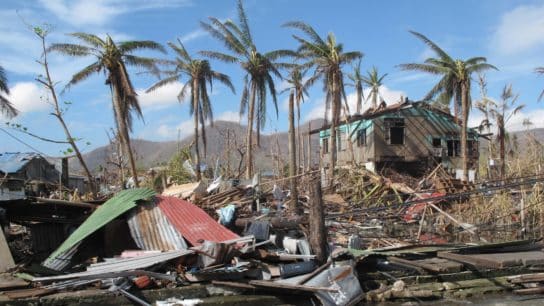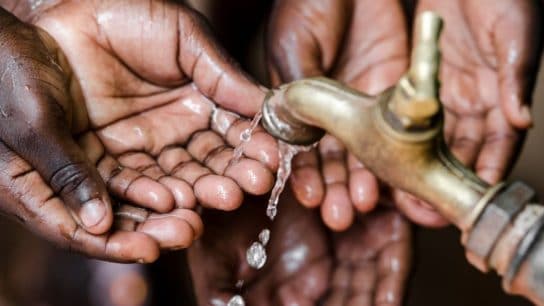Antimicrobial resistance (AMR) has become a major threat to human health across the globe. The World Health Organization (WHO) recognises AMR as one of the top threats to global health. A study estimated that about 4.95 million deaths can be linked to bacterial antibiotic resistance each year but experts fear the number will rise to 10 million by 2050. AMR does not only have a significant impact on the national healthcare system but it also reduces agricultural output and negatively affects economic stability. We take a look at what exactly AMR is, how it developed, and how the world is fighting it.
—
What Is Antimicrobial Resistance?
Antimicrobials (or antimicrobial agents) refer to substances that are adopted to prevent and cure infection not only in humans but also aquaculture, livestock, and crop production. These substances can be grouped by the type of pathogen they fight, including antibiotics for bacteria, antivirals for viruses, antifungals for fungi, and antiparasitic for parasites.
AMR development is, in fact, a natural process, yet bacteria or other microbes submerged in multiple antimicrobial environments can quickly adapt and spread resistant genes. Microbes with resistant genes can restrict access, and actively remove, or destroy, antimicrobials as part of their defense mechanism to survive.
The AMR developing process can be accelerated due to misuse or overuse of antimicrobials by both humans and animals. Common examples are the initial prescription of broad-spectrum drugs to patients even in cases where they are non-essential or unnecessary. Antibiotics are also applied as feed additives in agriculture and aquaculture to help keep livestock healthy and maintain productivity. This is especially the case in developing countries, were awareness of AMR is limited.
Do We Need to Be Concerned About AMR?
Developing AMR has a multi-dimensional impact on human society. For starters, without effective antimicrobials to prevent or treat drug-resistant infections, patients who undertake surgery such as organ transplantation, cancer chemotherapy, or even with chronic disease will be increasingly at risk due to weakened immune response.
Patients infected by drug-resistant bacteria may also lengthen hospitalisation and cost of treatment due to ineffective therapy by first-line drugs, which are regarded as the best treatment and are generally cheaper and more effective than second- or third-line drugs. Thus, patients with AMR therapy usually face higher healthcare costs due to prolonged hospital stays and increased demand for second- and third-line drugs.
Scientists are also worried that climate change may exacerbate the situation of AMR, given that the phenomenon is associated with an increased spread of diseases. Indeed, warmer temperatures lead arthropod vectors such as ticks and mosquitoes or reservoir animals such as rodents and birds to migrate to higher latitudes, which often carry vector-borne infectious diseases to northern regions. A study published in the scientific journal Nature estimated that a temperature increase of 10C across US regions was associated with an increase of 2.7% to 4.2% AMR for common drug-resistant bacteria including E. coli (Escherichia Coli), golden staph (staphylococcus aureus), and Klebsiella (Klebsiella pneumoniae).
Climate change also alters water availability and humidity in nature due to changing precipitation and evaporation patterns. Heavy rainfall and flooding may result in pathogen-containing sediment resuspending or mobilising in soil. This leads to surface or groundwater contamination, especially in regions with limited drinking water treatment facilities. Drought and wind also bring particles on cracked soil that contain disease-associated bacteria to the surface, such as Bacillus anthracis, which also relies on antimicrobials as a standard treatment.
What Is the World Doing to Address the Problem?
The World Health Organization (WHO) has often emphasised the importance of adopting a One Health Approach, as joint efforts across multiple sectors are required to develop integrated solutions to tackle human, animal, and ecosystem health problems including AMR.
As part of the overarching approach, WHO launched a Global Antimicrobial Resistance and Use Surveillance System (GLASS) to standardise AMR surveillance, build capacity, and monitor national performance on antibiotic usage.
An antibiotic classification system known as the AWaRe Classification to strengthen stewardship of antibiotics was also built in 2017 and subsequently updated in 2021. The system helps to keep track of antibiotic consumption and can be used by the government to define targets and monitor policy effectiveness. Antibiotics are categorised by their level of importance to human society, including their resistance potential and the capability to treat multidrug-resistant pathogens. AWaRe stands for Access, Watch, and Reserve, where Reserve refers to a type of drug extremely effective in treating multidrug-resistant organisms and that should therefore only be used as the last-resort antibiotic for treatment.
Regional efforts from the European Union (EU) have also been made. The 27-nation bloc recently adopted a new proposal to step up action to combat AMR. New 2030 targets include reducing 20% of total antibiotics consumption in humans, reaching a 65% effectiveness rate over the total antibiotics consumption, and reducing infections of three key antibiotic-resistant bacteria at hospitals by strengthening antimicrobial stewardship, infection prevention control, and surveillance.
In contrast, Asia – which is home to about 60% of the world’s population – has shown limited effort to combat AMR, with few exceptions. As one of the countries with the largest population, China issued a 2016-2020 National Action Plan to manage antimicrobial usage among hospital inpatients and successfully reduce the average rate from 59.4% in 2011 to 36% in 2019. The Second National Plan 2022-2025 was also issued by the Chinese government last year for continuous efforts to fight against AMR.
In 2022, the Hong Kong government published a new strategic action plan for the upcoming five years to strengthen AMR control measures. Given that almost half of the antimicrobials prescribed in 2021 were prescribed by private doctors, the authority will now review and consider mandating proper record-keeping of antimicrobial prescription and dispensing data across the supply chain.
To engage with the public, some countries and private companies offer drug take-back systems that help diverge unused or expired medicine from entering household waste streams or flushed with sewage that contaminates the surrounding environment. Examples include the National Prescription Drug Take Back Day in the US, the Return Unwanted Medicines Projects (RUM) in Australia, and China’s public welfare campaign on recycling expired medicines.
Conclusion
Antimicrobial resistance is another example of the interconnection between human society and nature. Analysing its impacts is also helpful in highlighting and understanding why there is an urgent need for cross-sectoral communication, collaboration, and coordination in sustaining human, environmental, and animal health.
While the development of antimicrobial resistance in microorganisms is a naturally occurring process, the misuse and overuse of antimicrobials enable drug-resistant pathogens to evolve even faster than drug discovery, posing a significant threat to human health. Careful use of antimicrobials and take-back systems are essential to slow down the development of antimicrobial resistance.
You might also like: What’s the Link Between Climate Change and Disease Outbreaks?














